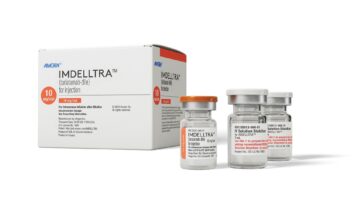Current medical news and unique business news for anyone who cares about healthcare.
Flu shot ready to go. The FDA said Monday it approved the formulation for the 2011 flu shot, which is designed to protect against two strains of influenza type A and type B just like last year. Six manufacturers will produce and distribute flu shots this year: CSL Limited, GlaxoSmithKline Biologicals, ID Biomedical Corp., MedImmune Vaccines, Novartis Vaccines and Diagnostics, and Sanofi Pasteur.
And for those who cringe at the thought of taking a needle to the arm, there’s a new flu shot this year that’s injected just under the skin rather than into the muscle, using a needle that’s 90 percent shorter than the typical one.

BioLabs Pegasus Park Cultivates Life Science Ecosystem
Gabby Everett, the site director for BioLabs Pegasus Park, offered a tour of the space and shared some examples of why early-stage life science companies should choose North Texas.
Still no nicotine vaccine. A stop-smoking vaccine developed by Nabi Biopharmaceuticals has failed in a late-stage clinical trial. NicVax was the first stop-smoking vaccine to reach Phase 3 clinical trials, and another trial that is still going is expected to wrap up late this year.
A rough week for Transcept. Transcept Pharmaceuticals Inc. announced it will cut 45 percent of its workforce after the FDA denied approval of its insomnia treatment Intermezzo. The company plans to phase out certain positions that aren’t essential to “pursue potential paths forward with the FDA,” according to CEO Glenn Oclassen. As of June 30, Transcept had $59.6 million in cash and marketable securities.
Super EHR reader. IBM’s supercomputer Watson can be programmed for radiology to become an electronic health reader supercomputer, its creators say. If everything goes as hoped, the computer would be able to scan patient records and help diagnose, determine treatment and analyze charts.
Has technology gone too far? In 2010, the da Vinci surgical system — a robotic surgical device approved by the FDA 11 years ago — was used in an estimated 220,000 surgeries in the U.S. While some surgeons say using the device leads to less scarring and blood loss and better dexterity, but others say it adds costs to already pricey procedures and doesn’t always work better than surgeries performed by human hands.












